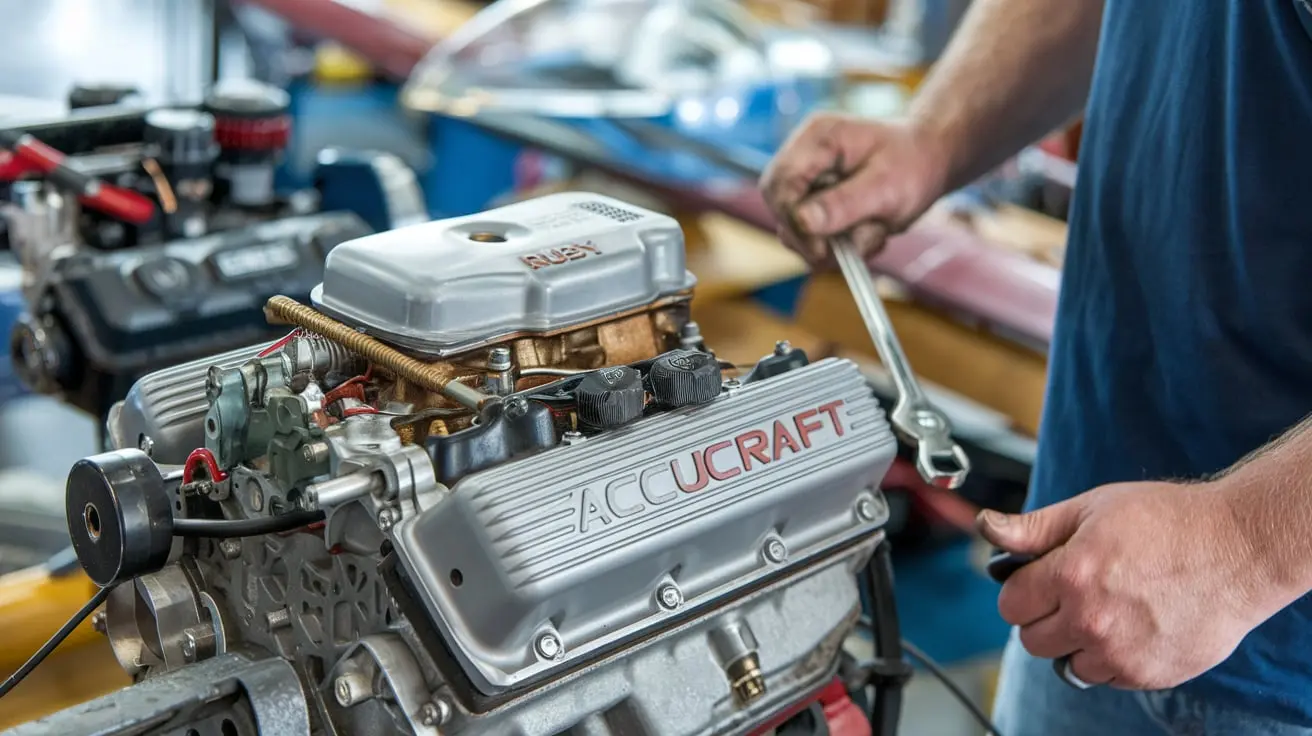The Accucraft Ruby is a reliable and versatile steam engine popular among model train enthusiasts. Proper timing is essential for the engine’s smooth and efficient operation. If the timing is off, the engine may lose power, run unevenly, or fail to function. Fortunately, setting the timing on an Accucraft Ruby is a straightforward process if you follow the correct steps. This guide provides a simple, step-by-step approach to help you set the timing with precision and confidence.
Why Timing Matters
Timing controls when steam enters and exits the cylinders. Proper timing ensures smooth power delivery, efficient operation, and longer engine life. Misaligned timing can lead to:
- Reduced performance
- Difficulty reversing direction
- Excessive wear on parts
Setting the timing correctly will optimize your engine’s performance and protect its components.
Tools You’ll Need
Before starting, gather these tools:
- Hex key set
- Small screwdriver
- Needle-nose pliers
- Steam oil or lubricant
- Soft cleaning cloth
Having these tools ready will make the process faster and easier.
Step 1: Understand the Engine’s Components
To set the timing, you need to know the key parts of the Ruby engine:
- Cylinders: House the pistons that drive the wheels.
- Valve Gear: Directs steam into and out of the cylinders.
- Eccentric Rods: Link the motion of the wheels to the valve gear.
- Reversing Lever: Controls forward and reverse motion.
Familiarize yourself with these components by referring to the user manual or inspecting the engine closely.
Step 2: Prepare the Engine
- Place the Ruby on a flat, stable surface.
- Ensure the boiler is empty and the engine is not under pressure.
- Clean the moving parts with a soft cloth to remove dirt and debris.
- Rotate the wheels by hand to inspect their motion and check for resistance.
Preparing the engine ensures a safer and smoother adjustment process.
Step 3: Observe the Current Timing
Rotate the driving wheels manually and watch how the valve gear moves. Pay attention to:
- When steam would enter the cylinder.
- When exhaust steam exits the cylinder.
If the valve gear does not move smoothly or appears out of sync, the timing needs adjustment.
Step 4: Adjust the Eccentric Rods
The eccentric rods are critical for timing adjustments. Follow these steps:
- Locate the eccentric rods near the drive wheels.
- Use a hex key to loosen the screws securing the rods.
- Adjust the rods so they align correctly with the valve gear.
- Tighten the screws after making the adjustments.
Check both sides of the engine for symmetry. Small adjustments can make a big difference.
Step 5: Fine-Tune the Valve Gear
The valve gear regulates steam flow into the cylinders. Precise adjustments are necessary:
- Identify the linkage connecting the reversing lever to the valve gear.
- Loosen the linkage slightly and adjust its position.
- Ensure the valve opens and closes at the correct points during wheel rotation.
- Retighten the linkage and test the movement.
Repeat this process until both sides of the engine operate smoothly and evenly.
Step 6: Test the Timing Manually
Rotate the wheels by hand again to test the adjustments. Look for:
- Smooth and even movement.
- Proper synchronization of the valve gear.
- Equal performance in forward and reverse directions.
If the motion feels jerky or uneven, revisit the previous steps and make further adjustments.
Step 7: Lubricate the Moving Parts
Proper lubrication reduces friction and protects the engine components. Apply a small amount of steam oil to:
- Cylinders
- Eccentric rods
- Valve gear
Wipe off any excess oil to prevent dirt accumulation.
Step 8: Test Under Steam
Once satisfied with the manual adjustments, it’s time to test the engine under steam:
- Fill the boiler with water and light the burner.
- Allow the boiler to build pressure.
- Slowly open the throttle and observe the engine’s performance.
Pay attention to how the engine runs in both forward and reverse. If it struggles or hesitates, fine-tune the timing again.
Step 9: Make Final Adjustments
After the steam test, inspect the timing and make any necessary final tweaks. Focus on:
- Improving power delivery.
- Reducing any irregularities in motion.
- Ensuring the engine reverses smoothly.
Repeat the steam test until the engine runs flawlessly.
Common Problems and Their Solutions
Even with careful adjustments, you may encounter issues. Here are some common problems and how to fix them:
- Jerky Movement
- Check for loose screws or misaligned rods.
- Re-tighten and realign as needed.
- Difficulty Reversing
- Adjust the reversing lever linkage for better motion.
- Loss of Power
- Ensure the valve gear allows full steam entry.
- Re-lubricate moving parts.
- Uneven Performance
- Recheck the symmetry of the eccentric rods and valve gear.
Tips for Success
- Take Your Time: Rushing can lead to errors. Work slowly and methodically.
- Double-Check Your Work: Ensure every adjustment is precise.
- Practice Regular Maintenance: Keep the engine clean and lubricated to prevent future timing issues.
- Consult the Manual: Refer to the user manual for specific guidance on your Ruby model.
Why Proper Timing Matters
Setting the timing on your Accucraft Ruby correctly ensures:
- Efficient steam usage.
- Smooth operation in both directions.
- Longer lifespan for engine components.
- Greater enjoyment of your steam locomotive hobby.
The Joy of the Accucraft Ruby
The Accucraft Ruby is a fantastic model for both beginners and experienced hobbyists. Its robust design and adjustable components make it ideal for learning about steam engine mechanics. Proper timing enhances its performance and ensures countless hours of enjoyment.
Final Thoughts
Setting the timing on an Accucraft Ruby engine is a rewarding process that improves the engine’s efficiency and reliability. By following these quick and easy steps, you can ensure your Ruby runs smoothly and performs at its best. Regular maintenance and proper care will keep your engine in top condition for years to come.
Whether you’re a seasoned enthusiast or new to model steam engines, mastering this skill will deepen your appreciation for the mechanics and artistry of steam locomotives. Enjoy the journey!

